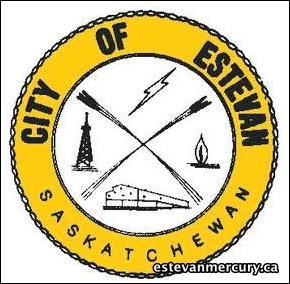A new regional water system could be the way of the future for communities along Highway 39.
Nine municipalities are working together to investigate the possibility of a new water system, drawing on water from the Rafferty Dam Reservoir. The idea has been kicking around municipalities in the southeast for a couple of years now, but it hasn't been until recently that groups were able to act on it. Coming to the forefront in the spring of 2011, the idea was put on the back burner as the area dealt with rising water levels from spring flooding.
Allan Hauglum, Midale's mayor and chair of the Rafferty Regional Water Committee, is the driving force for the proposed project and said the time was right to bring the proposal back to his neighbouring councils in late 2012.
"It was a thought in Midale because of our water supply, and we needed more water. We need to treat more water," said Hauglum, who noted his town draws from Rafferty and the water is good quality. "If we want to grow, for economic development or whatever, we need more raw water supplied into our treatment plant, plus we need to upgrade our treatment plant to make quality potable water."
He said the plan started small, with a couple of towns and RMs, involved, but then the idea expanded to incorporate the RM of Cymri, as well as the villages of Macoun and Halbrite.
The City of Estevan, RM of Estevan, Weyburn, RM of Weyburn and Hitchcock are also sitting on the water committee with two representatives each.
"Everybody figures it's an excellent idea to go with a regional waterline," added Hauglum.
Kevin Sutter, manager at the Estevan Water Treatment Plant, said demand in the city is not an issue yet. A reservoir is being added for 2013, and the local utility can supply water for upwards of 15,000 people, leaving plenty of wiggle room under Estevan's current population.
A feasibility study is the next step, and the committee has selected JR Cousins Consultants Ltd. to complete the report. Hauglum said it will take about six months to complete, and they are expecting to have the final report from the study in late August or September.
"When they're all done, we'll be sitting down, the nine municipalities, and seeing who wants to be involved with it or if it's going to go ahead at all," said Hauglum.
He noted nobody is tied down to the project. Even those who don't wish to move forward with the group can use the study for an individual project if they want to do something themselves, he said.
"Our biggest interest is looking into the future," said Sutter. "Water supply is very closely linked to economic diversity and the ability for an area to grow. We are definitely going to see what this feasibility study shows us and what is indeed feasible to supply water to the whole region. The City of Estevan wants to keep all their options open."
Hauglum is excited at the possibilities of the new waterline, because of the need for his town to add capacity so they can grow.
"We need to treat more water to grow," he said.
Sutter said Estevan is getting involved in the early stages, not because of a need to grow the city's infrastructure, but because of a curiosity. He said they have an idea of what they will need 10 years down the road, but looking ahead 50 years is something they would like to see.
"Benefits to the City of Estevan, other than the economic diversity that it might bring to the city, would be possibly a secondary supply of water if something should happen," added Sutter. "There would be that pipeline that we could get water from other areas, although the pipeline would probably be looking at Estevan to supply it not the other way around."
Sutter said regional water systems have more redundancies, making them a little more "bulletproof."
How things will work, Hauglum said they won't be entirely sure until the study is completed. He said everyone may continue to use their own treatment plants.
"I think everybody will still be using their own treatment plants along the road - anybody that has one - because you'll still need distribution points in the community," added Hauglum.
There are already two regional water systems in the province, as SaskWater operates treatment plants for both the Wakaw-Humboldt and Codette Lake regional potable water systems.
A public forum was held Jan. 23, 2012 in Midale, giving local stakeholders an opportunity to learn more about how water quality and quantity affects their livelihood.
Hauglum expects they will be able to get some sort of grant, particularly because the government is pushing the amalgamation of water systems as a good strategy for rural centres moving forward.
He noted they aren't just planning for the next five or 10 years but the next 50 because water is so vital to the future of every community.
"Without water, you're pretty much at a standstill. Nobody can survive without water. Your community will die if you don't have quality water. It'll help every community along Highway 39 and the RMs along the way."




